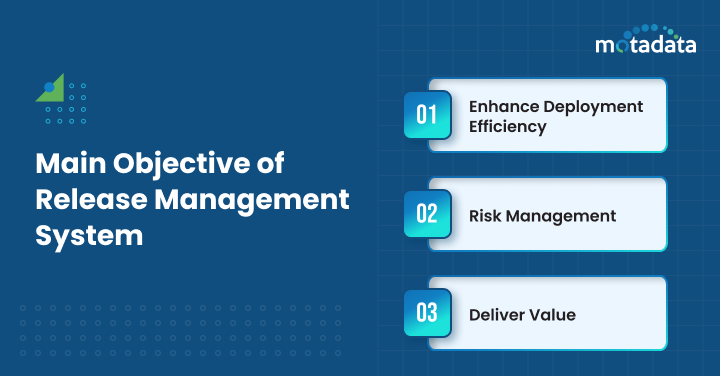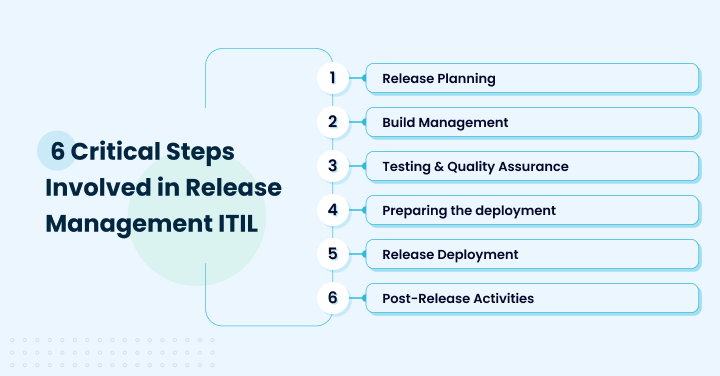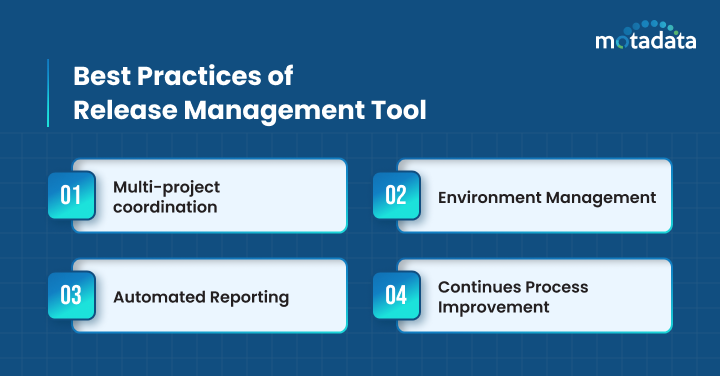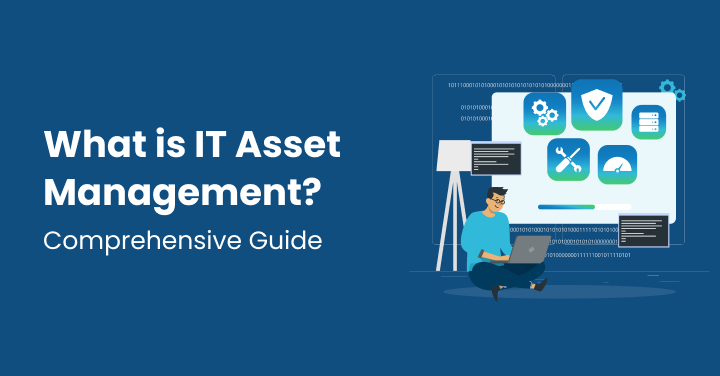Release Management Software is super essential for ensuring software products are delivered smoothly.
It helps with getting the deployment done right, lowering risks, and providing value to get where it needs to go.
Focusing on quality checks, managing risks, and figuring out how best to deploy stuff makes everything work better and keeps customers happy.
Planning releases, testing them before they go live, and handling issues after release are vital to creating software.
You can improve the release process using sound methods and the right tools. This leads to a successful cycle where deploying new or updated software goes off without a hitch.
What is Release Management?
Release management is designed to help organizations manage and automate software release processes.
It encompasses the planning, scheduling, and controlling of software builds through different stages and environments, ensuring that the deployment process is smooth, reliable, and efficient.
Main Objective of Release Management System
Release management tools become critical for any software product’s success by focusing on making deployments more efficient, cutting down risks, and ensuring every release adds value.
This method also matches what project managers and product developers try to do—bringing order to how new software versions are released.
Enhance Deployment Efficiency
The release management software helps deploy new updates faster.
This means putting together all the steps of creating and releasing software in a way that avoids mistakes and doesn’t waste time.
Using tools like Azure Pipelines makes it easier for teams to get their work out without climbing a steep learning curve, making everything more efficient.
Adding checks on how healthy things are going and automating parts of getting the update ready can speed up getting new features to users while keeping problems low.
Risk Management
Handling the risks well is essential so everything goes smoothly when releasing new stuff.
The managers have a big job: spot any problems early on, figure out how much trouble these could cause, and devise plans to avoid them.
By monitoring these risks throughout the cycle, teams can prevent issues before they become big headaches, ensuring things stay on track for a successful launch.
Putting reasonable risk management steps in place makes projects more challenging and less likely to run into surprises that slow progress.
This way, everyone works better together towards getting top-notch software products out the door without hiccups.
Deliver Value
The Release management tool are necessary when creating software because they help ensure new software or updates get to customers smoothly.
These tools are all about improving things for the people who use them by making it easier and faster to get new versions out there.
They do this by organizing how a software update goes from being an idea to something everyone can use, automating parts of getting the software where it needs to go, and generally making everything work more efficiently.
With reasonable control over each step in updating software, teams can keep bringing out cool new stuff or fixing bugs regularly, which makes users happy since they’re always getting something better than before.
Importance of Release Management Tool
The release management system improves the product and keeps customers happy by giving them what they need when they expect it.
By following top-notch methods and using the proper tools, companies can make their whole software development process more efficient from start to finish.
Quality Assurance
Putting the software through strict tests, we catch and fix any mistakes quickly, ensuring that what you get is perfect.
When it comes to checking quality, there are many ways to do it, like testing each part separately, seeing if they work well together, and making sure real users find it easy and valuable.
On top of that, using tools that test automatically makes this whole process faster and more precise.
Quality assurance isn’t just about ensuring the software works right; it’s also about keeping customers happy by giving them something great that does precisely what they need or even more.
Risk Mitigation
A crucial part of managing post-development processes is cutting risks to provide continuous delivery.
When teams spot and tackle possible problems early in the release process, they can stop these issues from getting bigger and causing project hiccups or failures.
To do this, they look closely at weak spots in how software gets delivered, put the proper safeguards in place, and make backup plans just in case.
By avoiding potential troubles, projects become more robust against surprises that could throw things off track.
This careful planning makes sure releases go smoothly and keeps everyone involved happier.
Efficiency
Being efficient means making the most of your time to get things done quickly and without mistakes.
By using automated processes, we cut down on the need for people to step in all the time.
This makes everyone’s job easier and helps avoid hold-ups, making everything smoother.
With best practices and tools designed for this purpose, teams can get their work out faster without letting quality or stability slip through the cracks.
At its heart, efficiency ties together all our efforts in development with what the business is aiming for ideally.
Deployment Strategies and Execution
Businesses must understand their deployment strategies and know how to accomplish them right.
Tools like Motadata Release Management Software can make things go a lot smoother.
It’s all about working well with different teams and ensuring everything works together across various environments throughout and beyond the product development process. With agile methods, we can quickly adjust if anything changes.
Monitoring and Managing Release Success
Release managers use performance metrics to monitor the new cycle, ensuring everything is delivered smoothly.
They watch over essential signs of progress, such as code management, and quickly deal with any issues.
They handle post-deployment activities in different settings and improve things for future releases.
Working together with teams from operations to development ensures a smooth deployment process.
Always looking to improve, they create detailed notes and review everything after the final process.
Customer Satisfaction
Ensuring customers are happy when releasing new updates or products is crucial because it affects how they see and feel about your offering.
Our Release management tool can help companies make these updates smoother without glitches, which helps customers trust them more.
When a company quickly fixes problems based on what people say and takes their suggestions seriously for future releases, it shows they care about their users.
This keeps customers around for longer and turns them into fans who will talk up the product to others.
Critical Steps Involved in Release Management ITIL
Below are the critical factors that make the process of release management software a smooth ride:
Release Planning
Planning in release management ITIL is crucial when releasing a new software version.
This is when folks decide how to roll out the software, work together with everyone involved, and set clear goals for what they want to achieve.
Different ways of managing projects come into play here, depending on what works best for the project or what the team likes more.
Some teams might choose Agile methods like Scrum or Kanban, which let them make small changes quickly over time.
Others might select Waterfall because it follows a straight line from start to finish, which can sometimes be more accessible to manage.
Build Management
Build management is vital in the release management system. It involves preparing the software code for launch by compiling it, testing it, and packing it up nicely.
This step requires everyone on the development team to work closely to ensure everything works well and is ready to go.
As part of build management, after compiling all their code (that’s what we call compiling), developers check if every small piece works as expected through unit tests and look at how these pieces function together with integration testing.
They also take care of packaging everything needed for the software – think about including all those extras like dependencies and libraries.
Testing and Quality Assurance
Ensuring that a software post-development process is up to scratch and works as it should is crucial.
This means performing all sorts of checks, testing things out differently, and determining whether real users are happy with how it works.
Test management is a vital piece of this puzzle. Tools like Motadata make planning, performing tests, and monitoring results easier.
Quality assurance plays a significant role in checking the overall goodness of the post-deployment process.
Careful code review, automated and hands-on tests, and thorough results review help spot issues early on.
Preparing The Deployment
Preparing for the launch is a key part of the \management process.
This step ensures that everything about the software release, from its setup to testing, is ready for launch.
Configuration management takes up an important role; it ensures that every aspect of the software fits perfectly with where it should work.
It deals with sorting out files and settings specific to different environments.
Tools like Ansible or Puppet are convenient here because they make this task much more accessible by doing things automatically.
Setting up a test environment similar to the real deal—the production environment—is crucial for ensuring we’re on track.
Our development team can run tests as often as needed in this space. They check if everything works fine and look for issues that might only appear when we go live.
Release Deployment
Release deployment when we get to the part where the software is used in the real-world setting.
This step ensures everything runs smoothly as it moves from being tested to going live for everyone to use.
It’s all about making this move automated so there are fewer mistakes and involves working closely with someone called a release manager.
Automating deployment becomes more manageable with automation tools like Jenkins or Azure Pipelines.
These tools help get new code, move data around if needed, and change settings without doing everything by hand.
The manager is in charge of ensuring this whole process goes smoothly. They’re like team captains here—they keep an eye on everything happening during deployment and work alongside teams that handle different parts of operations.
If anything comes up or anyone has questions, they’re who you turn to.
Post-Release Activities
After the release, keeping up with what happens next is essential. This means reviewing how things went, talking to users about their experience, and considering the next steps.
Doing this helps ensure that new software versions improve over time, fix any problems that pop up, and keep customers happy.
After launching a new version, hearing from people who use the release management software and those involved in its creation is vital.
Their opinions give us clues on how well the software works in the real world. They tell us what works great and what doesn’t so we know where to improve or fix bugs.
Checking out different numbers, like how many people are using it more now than before or if common errors are popping up, tells us whether we did an excellent job with our latest update.
These performance metrics let our development team see clearly where improvements can be made for even smoother releases down the line.
Benefits of Release Management System
At its core, release management software is about making users smile by giving them smooth updates that meet their expectations.
By adhering to an organized release process, everyone ensures that new versions roll out without causing headaches for anyone relying on them.
1. Reduced Risks
One big plus of a release management system is that it helps reduce the risks associated with releasing new software.
It does this by spotting possible problems early and figuring out how to deal with them before they become more prominent.
With feature-rich and customized release management software, teams can identify and tackle potential issues head-on.
This means identifying where things might go wrong when rolling out updates, thinking ahead about whether new changes will work well with existing systems, and making sure there aren’t any security holes left open.
In addition, change management is crucial in keeping risks low during release management. By carefully tracking, testing, and approving every update before it goes live, teams can avoid accidentally introducing errors or messing up what already works.
2. Improved Quality
At the heart of release management system is quality assurance. It’s about ensuring everything in tool is updated before it goes out.
This means performing lots of tests, reviewing what those tests show, and fixing any issues they find.
With a solid release plan, including all necessary testing and checking on quality beforehand, teams can spot troubles early on.
Doing plenty of checks ensures that when we get an update, it does what it’s supposed to do without causing new headaches or breaking down.
When releases come out better because they’ve gone through this process, everyone using them ends up happier.
Fewer things go wrong after launch, which means people trust us more with each update we release.
And when do users keep seeing great results from these updates? That makes our team look terrific and helps us succeed even more.
3. Better Customer Satisfaction
With a well-organized release process, development teams can release updates that work smoothly, reliably, and just as they should.
This builds trust with users and makes them more satisfied.
Customers’ happiness is also affected by how quickly and often they receive updates. An effective release management tool allows development teams to plan and roll out these updates promptly.
This keeps the tool fresh, swiftly addresses user concerns, and adds customer value.
In addition, release management ITIL helps improve customer support by reducing problems after an update goes live.
It reduces the time when the service isn’t available and allows quick fixes or improvements.
This ensures users get help fast when needed, boosting their overall satisfaction with the product.
4. Collaboration and Communication
Working together and discussing things is critical to managing a software release smoothly.
When team members work closely and share what they know, getting the software through release management software out there works better.
Everyone must be on the same page to ensure everything goes as planned.
This means developers, testers, and operations personnel must aim for the same goal: successfully releasing the software.
By focusing on working together and keeping lines of communication open, teams can get better at handling releases.
This leads to getting new versions of their software ready for users without unnecessary delays.
5. Enhanced Control and Visibility
The release management tool makes managing and monitoring the release process easier, helping development teams oversee and track what’s happening during a release.
With a well-organized approach to releasing software, teams can set up essential goals, schedules, and checkpoints.
This gives them a firm grip on releasing new versions or updates.
It means they ensure every necessary step is taken carefully and in order without missing anything or making mistakes.
Having this kind of tight control over each stage combined with clear insights into its progression allows development crews to use their resources wisely and reduce chances for problems along the way, ensuring everything about launching new software goes as smoothly as possible.
6. Happy Stakeholders
When the release management system is done correctly, everyone involved in creating software, like product owners and managers, is pleased.
By sticking to a well-planned release process, development teams can ensure their updates live up to what stakeholders hope for.
With clear goals and open communication throughout this process, it’s more straightforward for everyone to be on the same page about when and how things will happen.
Satisfied stakeholders build trust and confidence in the team making the software because they see successful outcomes from releases time after time.
This good vibe encourages more teamwork and sparks creativity among team members working together towards common goals within individual projects as part of more considerable efforts across all aspects of developing great pieces of technology.
Best Practices of Release Management Tool
Adhering to these key practices during the release process improves development teams’ ability to deliver high-quality software and helps them successfully advance their businesses.
1. Multi-Project Coordination
When juggling several projects at once, managing releases can get pretty tricky. It’s all about good project management and ensuring different teams work well together.
With multiple projects on the go, it’s essential to coordinate everyone’s efforts, resources, and deadlines.
This means communicating clearly with each other, using tools that help us collaborate better, and applying intelligent project management methods for smooth sailing.
Setting up a single plan for all the work involved is vital to keeping everything running like clockwork when coordinating many projects.
We also need to ensure specific people are in charge of certain tasks and set clear goals.
Software like Smartsheet, Asana or Jira are helpful here because they let us track what needs to be done by who and how things are progressing.
Plus, they make chatting between teams super easy.
2. Environment Management
Handling the setup for release management software is super important.
It’s all about making and taking care of different spaces, like where we build the software, test it out, get it almost ready, and finally launch it.
This way, everyone working on getting the software out can do their thing without stepping on each other’s toes.
For starters, there’s a space just for building and first-round testing by folks who make the software.
Then comes another area focused solely on checking everything works through various tests, including unit checks, and seeing if users will find it easy to use.
We will be heading to a spot that closely resembles the location where we plan to place our finished product. This spot serves as a final check before launching everything live.
And at last, we have the real deal – where our hard work meets its audience.
3. Automated Reporting
Automated release reporting makes managing deployment much more effortless. It’s like having an intelligent assistant that helps you keep track of everything.
Special tools and technology automatically collect and analyze data about releasing new software updates.
This gives teams beneficial information and numbers on how healthy things are going.
With this kind of system, companies can see essential details as they happen, such as how long it takes to get something out there, if it’s working right, and other key performance numbers.
By looking into these details, they can spot any issues slowing them down, figure out what’s working well, and use facts to improve their release process.
4. Continues Process Improvement
The process always looking for ways to make workflows smoother and the quality of work higher.
By checking how things are done regularly and improving them, teams can speed up their development time and get more done overall.
With the help of performance metrics and listening to feedback, they can spot where things are slowing down and fix those areas quickly.
This way of doing things helps build a habit of constantly improving. As what people need changes or new trends come along in software development, release management tool keeps up with them, too.
This continuous effort to improve makes teams more flexible and quicker to respond when developing software.
Innovate with Motadata’s Release Management Software
Motadata’s release management system offers a range of features and functionalities, including deployment automation, that empower development and operations teams to work seamlessly together.
These features include:
- Planning and coordination: Our release management ITIL allows teams to plan and coordinate their release activities, ensuring that updates are structured and controlled.
- Automation and integration: The solution integrates with popular CI/CD pipelines and automation tools, enabling organizations to automate the build, testing, and deployment processes. This helps eliminate manual errors and accelerates the time to market.
- Performance monitoring and optimization: The platform provides real-time insights into software release performance, allowing organizations to track key metrics, identify bottlenecks, and optimize their release process for maximum efficiency.
- Collaboration and communication: The solution facilitates collaboration and communication between development and operations teams, enabling seamless coordination and knowledge sharing.
- Risk management and rollback: Motadata’s platform includes risk management and rollback features, ensuring that organizations can quickly and effectively respond to any issues or failures during the process.
With Motadata’s release management software, organizations can innovate and optimize their software delivery process, improving efficiency, reducing downtime, and ultimately delivering high-quality software updates to their customers.
| Feature | Description |
|---|---|
| Release planning | Plan and coordinate software releases in a structured and controlled manner. |
| Automation and integration | Integrate with CI/CD pipelines and automation tools for seamless release process automation. |
| Performance monitoring | Real-time insights into software release performance allow for optimizing and tracking key metrics. |
| Collaboration and communication | Facilitate collaboration and communication between development and operations teams. |
| Risk management and rollback | Manage and mitigate risks during the release process, with the ability to quickly roll back in case of issues or failures. |
FAQs:
It plays a crucial role in software development by ensuring that new updates and features are smoothly rolled out. It’s all about keeping user disruptions to a minimum while boosting the efficiency of deploying these changes.
Managing how and when software releases happen significantly improves the whole software development process, ensuring that everything from adding new features to updating existing ones is done successfully and efficiently.
It involves planning, coordinating, and executing software releases to ensure a smooth and organized rollout. On the other hand, change management involves managing changes within projects so they can be implemented effectively without causing too much trouble for the IT setup.
In release management system, automation is crucial because it smooths the deployment process, reduces mistakes people make when doing things by hand, and helps get software updates out faster.
Organizations can ensure their release process is efficient, consistent, and reliable by using automation to mix code, check if everything works right, and prepare the software.










